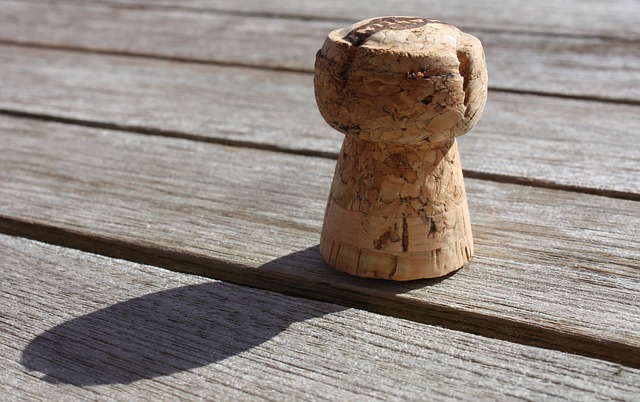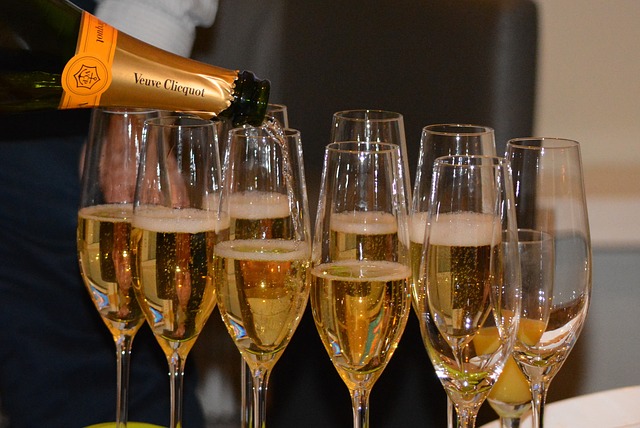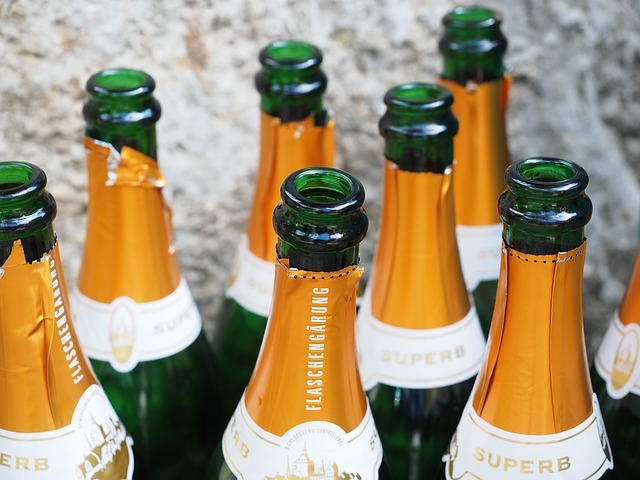Top Sparkling Wines and Champagnes – [year_shortcode]
Sparkling wines and champagne are associated with toasts, merrymaking and happy moments and are used to celebrate, commemorate and indulge. Selling more than 300 million bottles per year, Champagne is synonymous with celebration.
Sparkling wines and Champagne are made for birthdays, weddings, engagements, graduations and festivals. Who can celebrate a New Years Eve or toast the speeches at a wedding without popping corks and sipping sparkling bubbles? Let us raise our glasses and drink the stars!
Sparkling wines and Champagne
There are many sparkling wines produced around the world, yet most legal structures reserve the word “champagne” exclusively for sparkling wines from the Champagne region, made in accordance with Comite Interprofessionel du Vin de Champagne regulations. The name Champagne is legally protected by the Treaty of Versailles after World War I.
Over seventy countries adopted similar legal protection. Canada, Chile and Australia recently signed agreements that the term “Champagne” can only be used to products produced in the Champagne region. In Russia, sparkling wines were called Shampanskoe (Russian for Champagne) and the name is still used for sparkling wines produced in Russia, such as Rossiyskoe Shampanskoe and Sovetskoye Shampanskoe (the name remains from the Soviet times).
History of Champagne
Champagne dates back about 300 years and was developed in the Champagne region, a three hour drive north-east of Paris. Legend has it that a monk named Dom Pérignon were making wine and failed to complete the fermentation before bottling and corking the wine.
During the cold winter months the fermentation remained dormant, but with the arrival of spring, the fermentation resumed producing carbon dioxide. It is told that Dom noticed some of the bottles of wine exploded in the cellar, so he opened a bottle and poured the wine. His famous words were “Come quickly! I’m drinking stars.” The words still remain with many of us every time we open a bottle of Dom Pérignon.
The difference in the process of making Sparkling Wine and Champagne
Today, sparkling wine is produced worldwide and is usually labelled “Méthode Champenoise” if it is made by the French method. Champagne-making is labor intensive:
- The Cuvee: The cuvee is still wine selected for Champagne making. Quality wine made from grape varieties, such as Chardonnay or Pinot Noir, is usually selected. Mixed cuvees are also used and the alcohol content is typically around ten percent. A still wine process involves natural sugars converted into alcohol.
- The Tirage (liqueur de triage): The process where sugar, yeast and yeast nutrients are added to the cuvee is called “the Tirage.” After the cuvee, sugar, yeast and yeast nutrients are mixed; the bottling and corking process begins. The bottles are typically made of thick walled glass. The tirage is stored in cool cellars and fermentation will slowly produce alcohol and carbon dioxide.
- Maturation: The yeast cells die and the fermentation process are usually complete within a couple of months. The Champagne is allowed to age from one to three years. More expensive Champagnes age for up to five years. The yeast cells add “yeasty” flavours to the champagne during the aging process.
- Riddling (remuage): After the aging process, the bottles are turned upside down at a seventy-five degree angle. The “riddler” turns each bottle 1/8 of a turn while it is upside down. The riddling process allows the dead yeast cells, sediment or lees to build up in the neck of the bottle.
- Disgorging or dégorgement: In order to get rid of the lees, the neck of the bottle is frozen, the cap is removed and the carbon dioxide forces the frozen part out.
- Dosage: The content is filled up with a measured amount of champagne and cane sugar, also referred to as liqueur d’expedition. The wine is shaken in order to help integrate the wine with the liqueur d’expedition. The new cork is wired down to secure the pressure of the carbon dioxide.
The process of Sparkling Wine is less labor intensive. Large stainless steel tanks are used for the second fermentation process. Sparkling wine can also be produced by carbon dioxide injection. The “bulk” process of sparkling wine making is referred to as Charmat.
Top Champagnes – [year_shortcode]
There are more than 19,000 smaller vine-growing producers (vignerons) in Champagne and more than a hundred Champagne houses. Some of the top Champagnes include:
Champagne Krug – Clos D’Ambonnay 1996 Champagne, France
Olivier Krug located in Mesnil-sur-Oger (a village near Reims in Champagne) makes an average of 450,000 bottles of Champagne a year. The Champagne produced by Krug is often described as the Rolls-Royce of the industry and some of its devotees include Ernest Hemingway, Naomi Campbell, the late Queen Elizabeth the Queen Mother, John le Carré and Sir Alec Guinness. The Clos Du Mesnil is “misty on the nose; soft citrus, vanilla strong, but not aggressive; precise, neat with impressions of a meringue.” A bottle of Clos D’Ambonnay 1996 is priced at approximately $2,250.
Dom Pérignon – Rosé Oenotheque 1990 Champagne, France
This Champagne is available from $650 up to $1,000 per bottle. The 42% Pinot Noir and 58% Chardonnay produced Champagne, aged in the cellars for 20 years and disgorged in 2007, has a coppery pink color with yellow reflections and nose of developed aromas of spices and tobacco. On the palate a touch of humus, hints of spices, leather, light tobacco and a sensational fullness on the finish.
Champagne Henriot Cuvée des Enchateleurs Reims, Champagne, France
The Henriot family settled in Champagne in the 16th century. In the early 1960s Joseph Henriot, son of Etienne Henriot, took over the family company. The Henriot Rose Brut is made from 58% Pinot Noir and 42% of Chardonnay grapes. The Champagne offers a fruit nose that dominates the senses with citrus and floral scents. The palate enjoys a light, salivating fruitiness, with floral and hints of spice mixing well to create a long finish.
Other top Champagnes include
- Champagne Nicolas Feuillatte Palmes d’Or Brut Vintage 1997 Reims, Champagne, France;
- Champagne Perrier-Jouët 1999 Fleur de Champagne Blanc de Blancs Cote de Blancs, Champagne, France;
- Champagne Pommery 1998 Cuvée Louise Brut Champagne, France;
- Champagne Taittinger 2003 Comtes de Champagne Rosé Reims, Champagne, France;
- Champagne Charles Heidsieck N.V. Rosé Réserve Champagne, France;
- Champagne Delamotte Rosé Brut Le Mesnil-sur-Oger, Champagne, France.
Top Sparkling Wines – [year_shortcode]
Schramsberg – 2003 J. Schram California
A depth of fruit greets the nose: lemon-lime, pineapple, baked pear and orange marmalade. The palate is crisp with a caramelized apple and citrus profile. The rich sparkling wine finishes with roasted almonds and a lingering acidity.
Korbel Sweet Rosé California
The bright pink color is obtained from a mix of Pinot Noir, Sangiovese, Syrah, Zinfandel, Gamay and Chenin Blanc. The Korbel Sweet Rosé is a sparkling wine with fresh strawberry flavors and pomegranate flavors.
Mumm Napa Demi-Sec Napa Valley, California
The sparkling wine offers orange, mango and melon flavors with hints of white chocolate on the finish.
Ambeloui Alex 2004 Coastal Region, South Africa
The sparkling wine is made of 70% Chardonnay and 30% Pinot Noir. The wine has a bitter nose and tastes yeasty and developed.
Other top sparkling wines

- J Vineyards & Winery 1998 Vintage Brut Late Disgorged Russian River Valley, CA;
- Iron Horse Joy, Green Valley of Russian River Valley, California;
- Sea Smoke 2008 Sea Spray Sparkling Wine Santa Rita Hills, California;
- Robert Hunter 1997 Brut de Noirs “Extended Tirage” Sonoma Country, California;
- Scharffenberger Cellars NV Brut Mendocino Country, California.
Champagne and Sparkling Wine corks
The cork oak (Quercus suber) is the primary source of cork products. Countries that produce the most cork include Portugal, Spain, Algeria, Morocco, France, Tunisia and Italy. Cork is the water-resistant cells that separate the outer bark from the delicate interior bark. Typical features of cork: lightweight, rot resistant, fire resistant, termite resistant and soft and buoyant. Sparkling wine corks are fifty percent larger than the opening of the bottle and are built from several sections agglomerated corks. The corks are compressed prior to insertion into the bottle. The longer a cork has been in a bottle the less it returns to its original cylinder shape.
Enjoying Sparkling Wine or Champagne at Breakfast
It was Noel Coward who said: “Why do I drink Champagne for breakfast? Doesn’t everyone?” A sparkling wine or champagne breakfast is a great way to kick off a special day. You can enjoy a bottle of champagne or mix orange juice with the sparkling wine and enjoy it with strawberries. Stuffed Crepes, a veggie scramble with mushrooms, broccoli florets and bell peppers and a fruit salad with pineapple, mango, papaya and melon will go well with sparkling wine. “Every time you open a bottle of champagne it is a celebration, so there is no better way of starting a celebration than opening a bottle of champagne. Every time you sip it, you are sipping from all those other celebrations. The joy accumulates over time.” – David Levithan.

